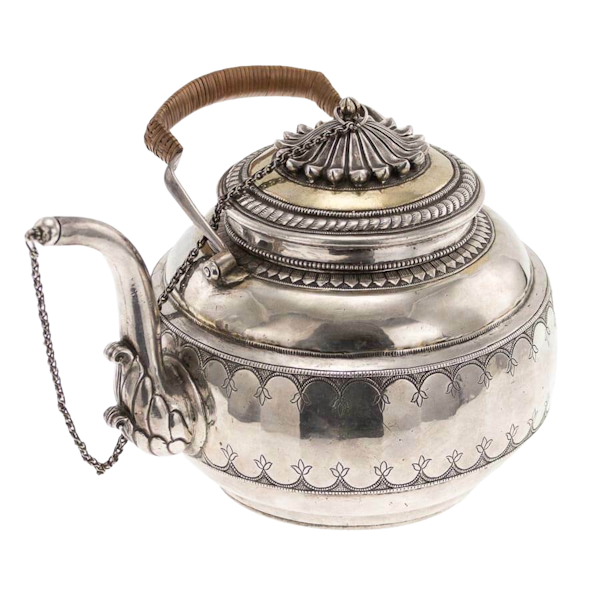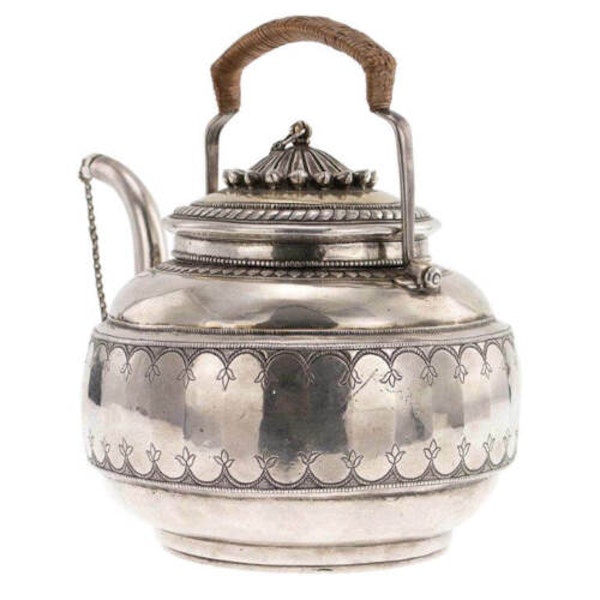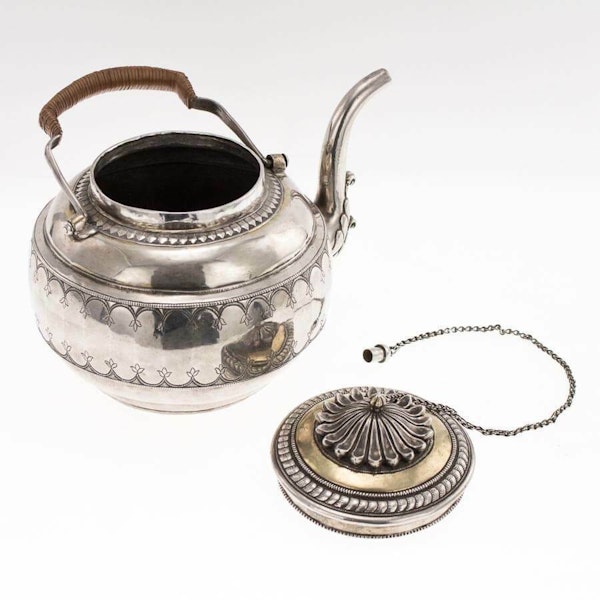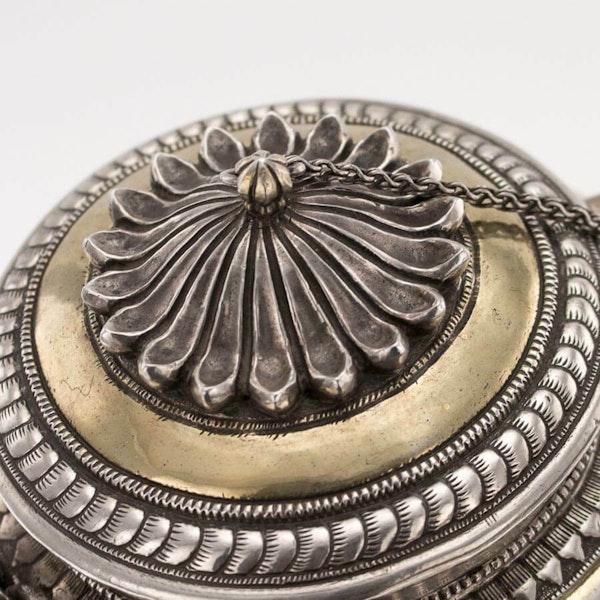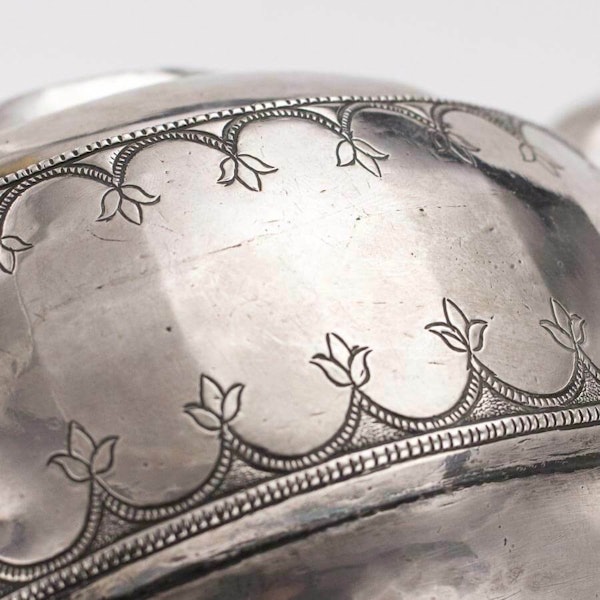Antique Indian Silver, Parcel-gilt & Gold Tea Kettle, India – Early 18th Century
Antique Indian Silver, Parcel-gilt & Gold Tea Kettle, India – Early 18th Century
£5,750.00
Description
This extremely rare Indian silver kettle bears an inscription for 1736 but could actually have been made some years prior to this date as it was common practice at that time to give existing items of silver from the household collection as gifts, rather than having a new item specially commissioned for the occasion.
The Indian Colonial Silver period (silver made in India by silversmiths of European descent), can be traced back to circa 1790 and the kettle pre-dates this by, at least, fifty years. Doubtless, there were a few European silversmiths working in India before 1790 but they did not mark the silver and are not recorded. However, the design and workmanship of this kettle suggest that it was made in India, by an Indian silversmith, for a European customer.
The kettle is of rounded shape with a deep protruding band stepping out from the central part of the body and increasing the width of the kettle at its mid-section. The band is edged with beading to top and bottom and shows traces of gilding. It is multi-sided or faceted which contrasts with the curved surfaces above and below. The faceted sides are chased to top and bottom with an architectural arch terminating in a stylised lotus motif. An arch shaped swing handle, bound with wicker, is attached to the body.
The domed lid has rope and bead borders and an applied gold band extends outwards from the base of the architectural style cupola which is surmounted by a lotus bud knob. The curved spout is of European form with a pronounced scrolling double acanthus leaf to the lower section near the junction where the spout meets the body of the vessel. The acanthus leaf was a favourite decorative ornament of Mughal art and a bas relief representation is often found at the point at which a handle or spout meets the vessel, as in this case. A plain, push-on cover for the spout end is linked by a silver chain to the finial on the kettle lid.
The lid design is similar to the cupolas of Lucknow’s Bara, (Asafi Imambara). There is a silver gilt and enamelled tray cover in the National Trust Collection, dating to the late 18th century, which demonstrates the same architectural style and was made in Lucknow. It is most likely this kettle was also made there.
The kettle is a fusion of Indian and European elements. It was made in India for the European market, most likely for a British, Dutch or French customer. The kettle bears a date of 1736, but could have been made several years earlier. An inscription, pricked to the underside of the base, reads; ‘N’, ‘S * B’, ‘1736’, probably signifying it was given as a wedding gift.
| item details | |
|---|---|
| Origin | Asian |
| Period | 18th Century |
| Style | Other |
| Condition | Excellent |
| Dimensions | Weight:1131 grammes |
| Diameter | Height 20 cms, width 22 cms (max) |
Product REF: 10045
